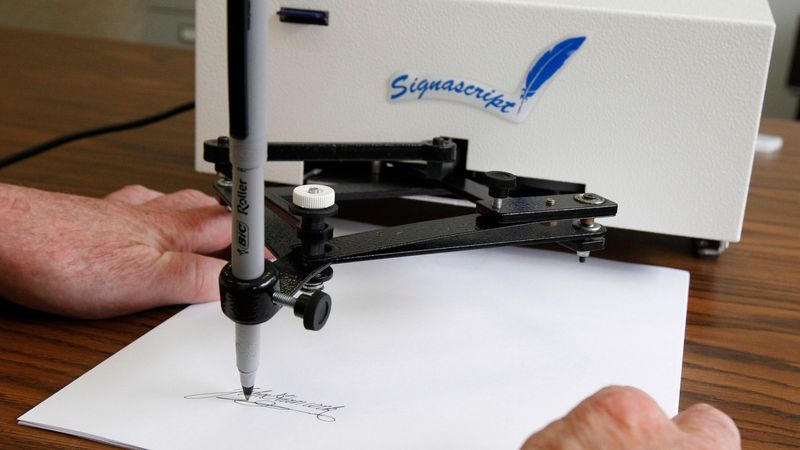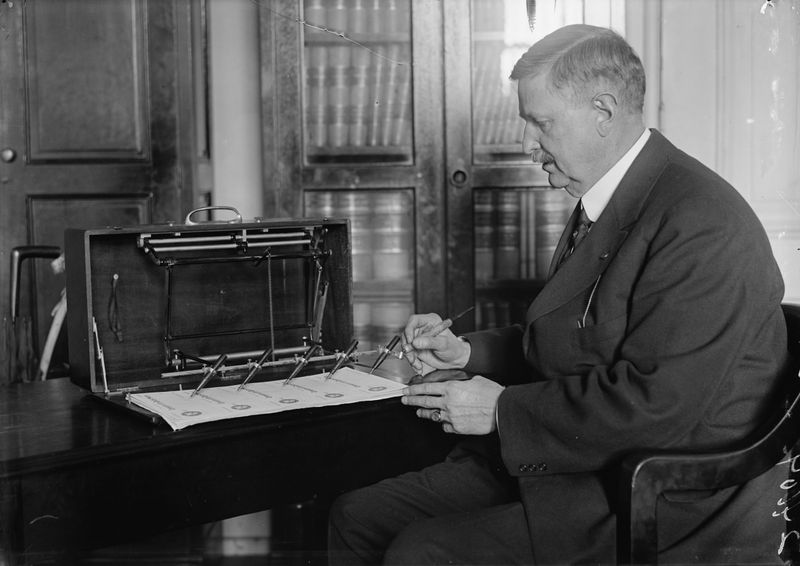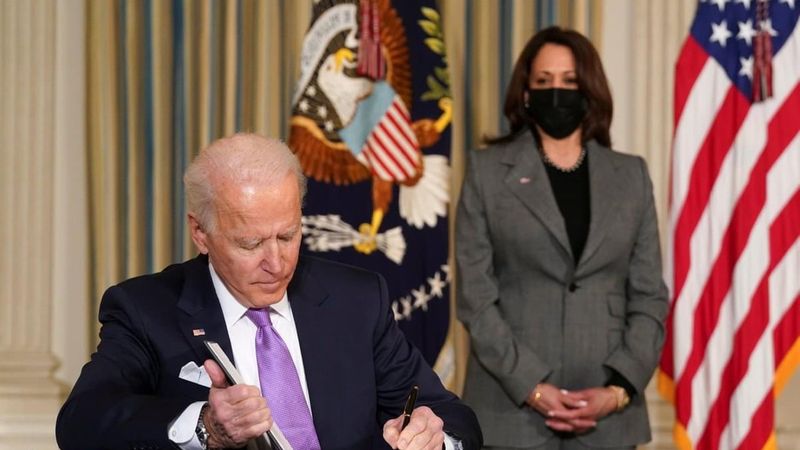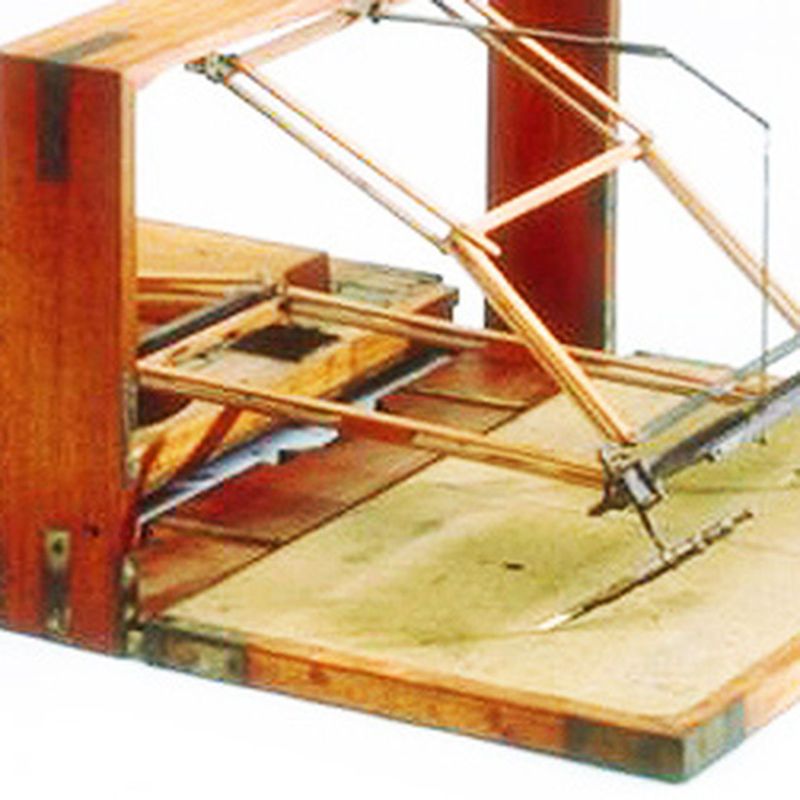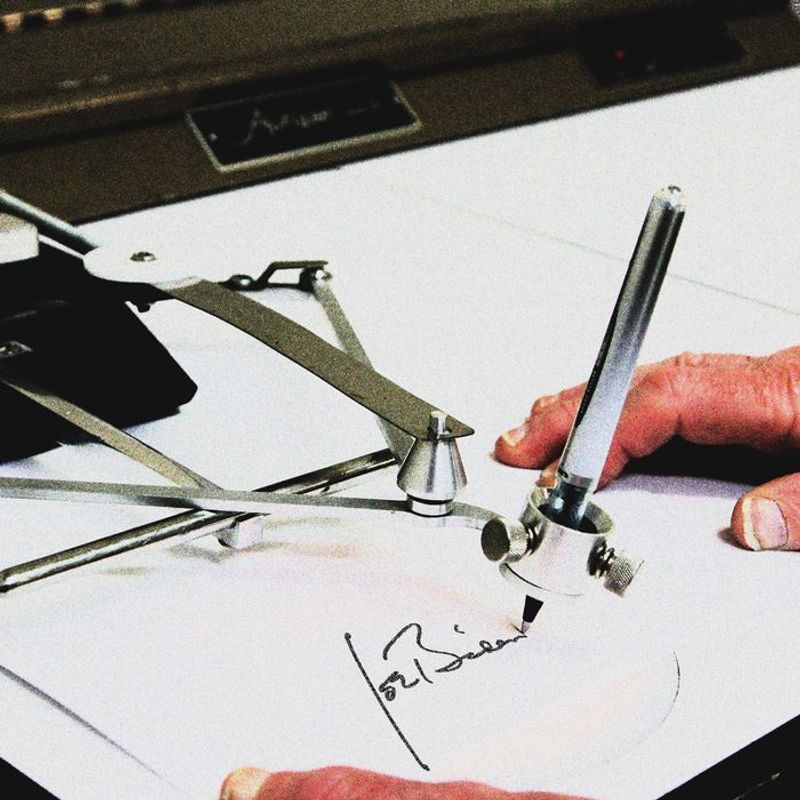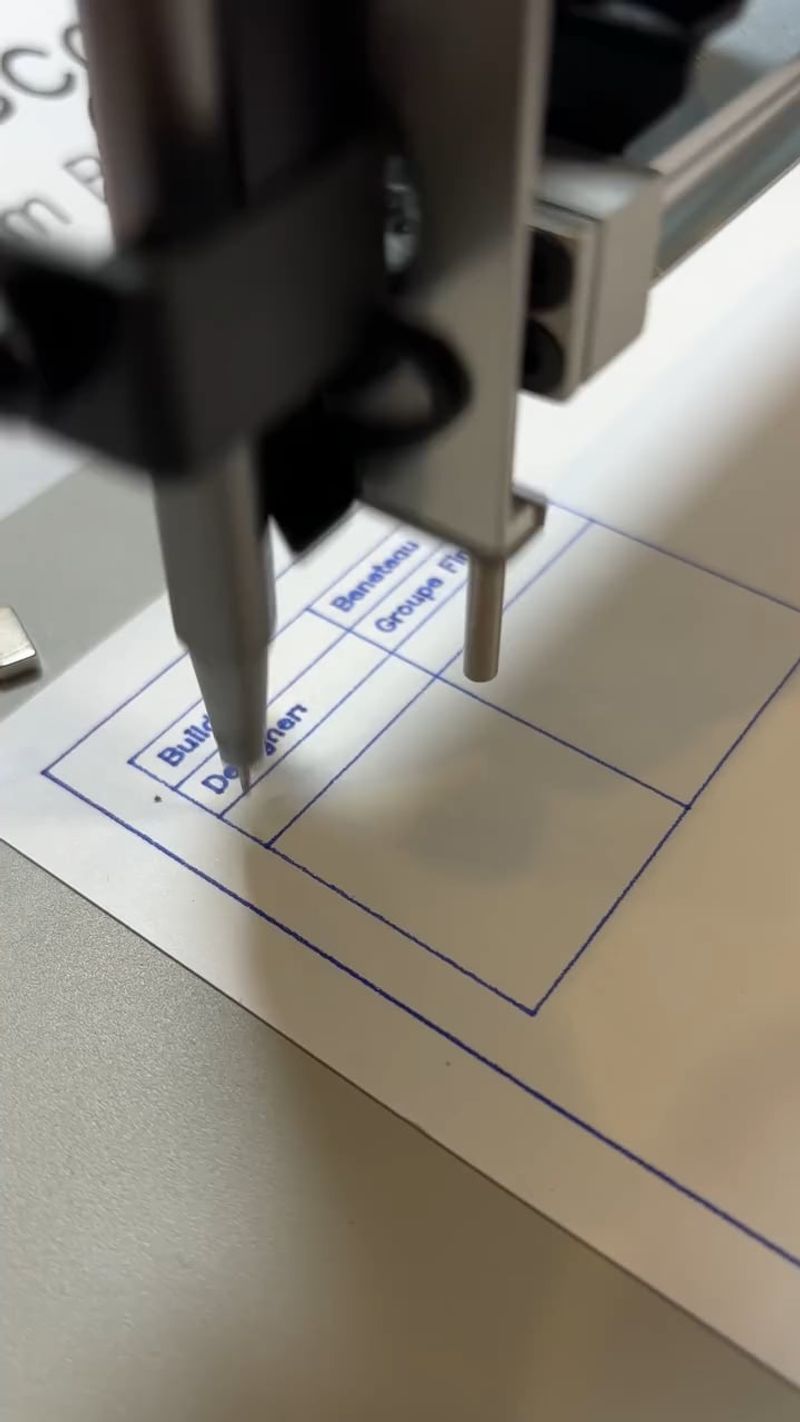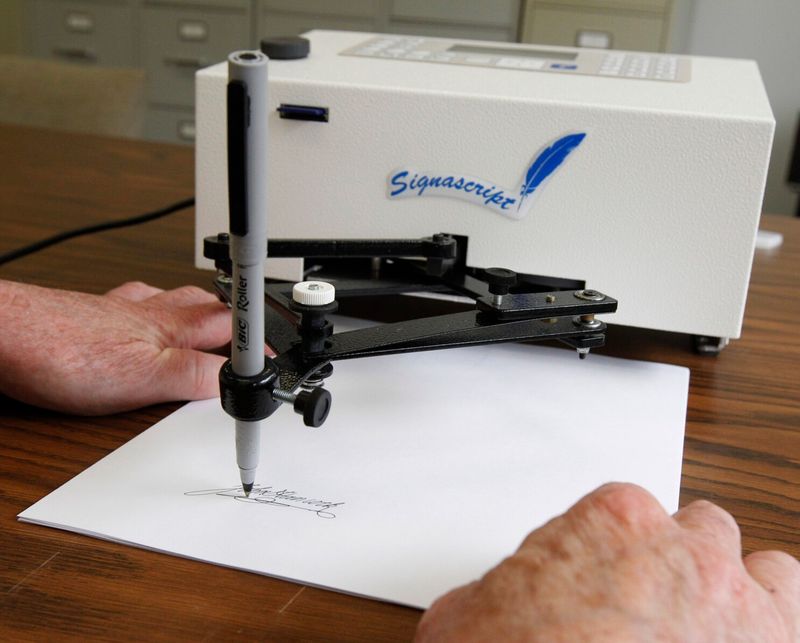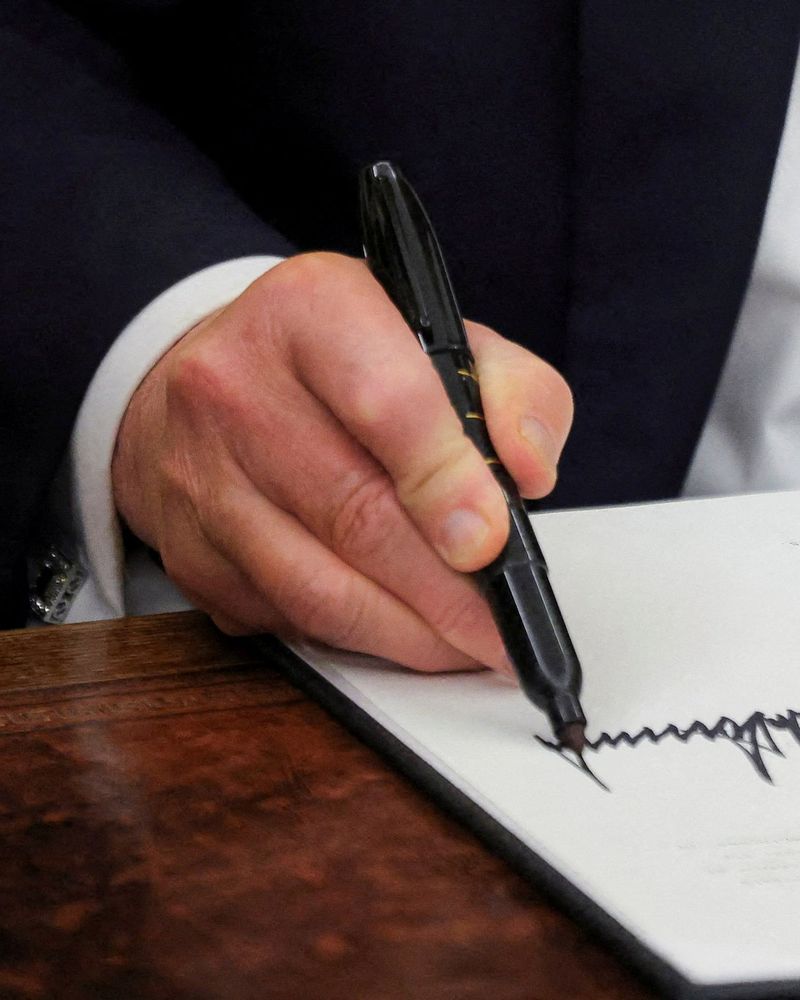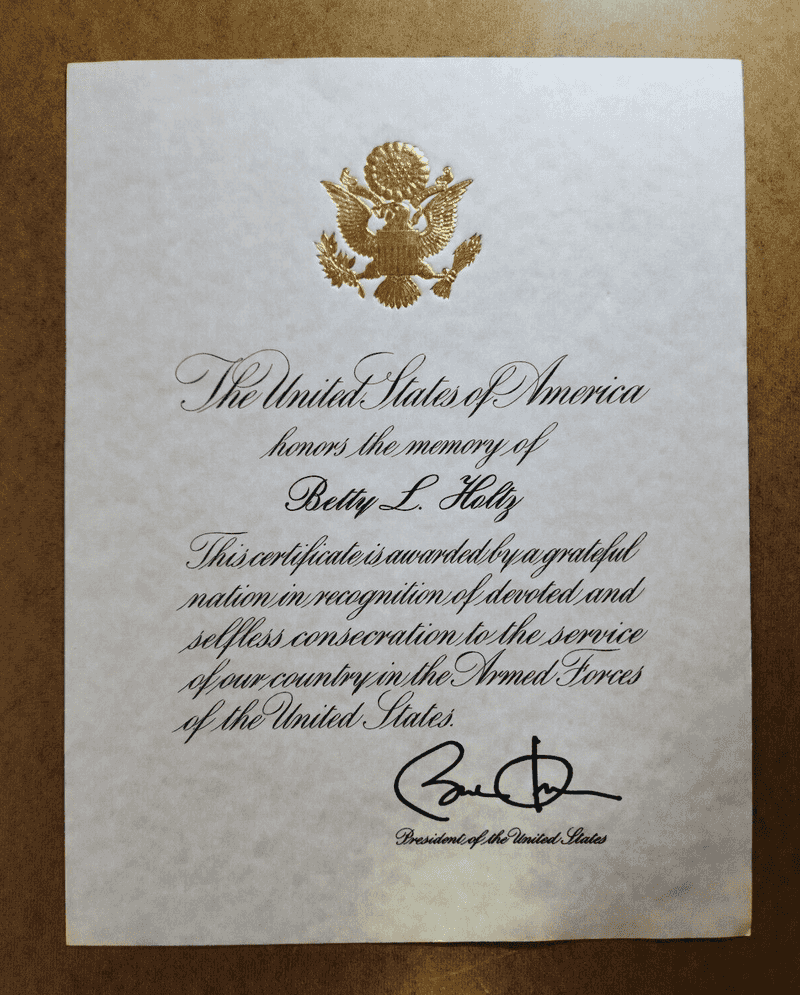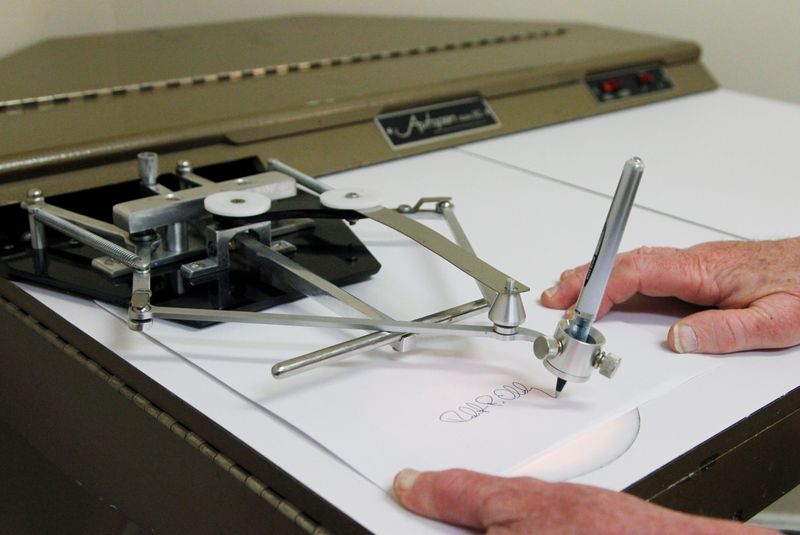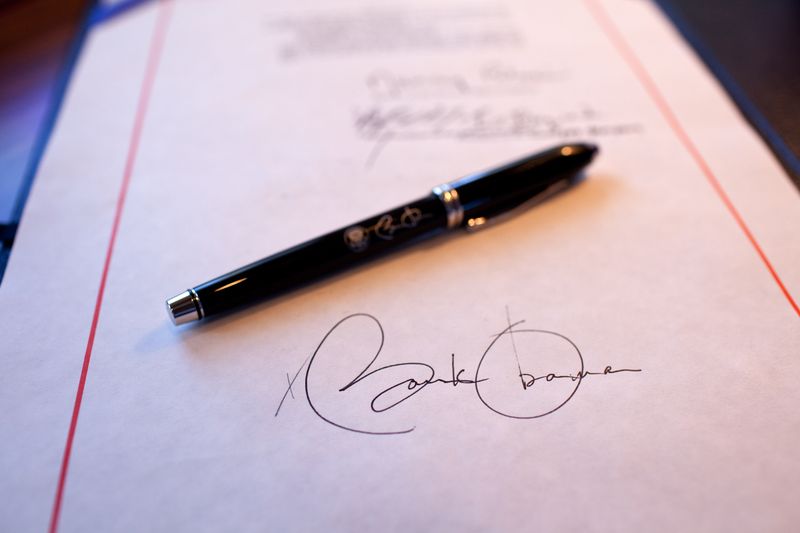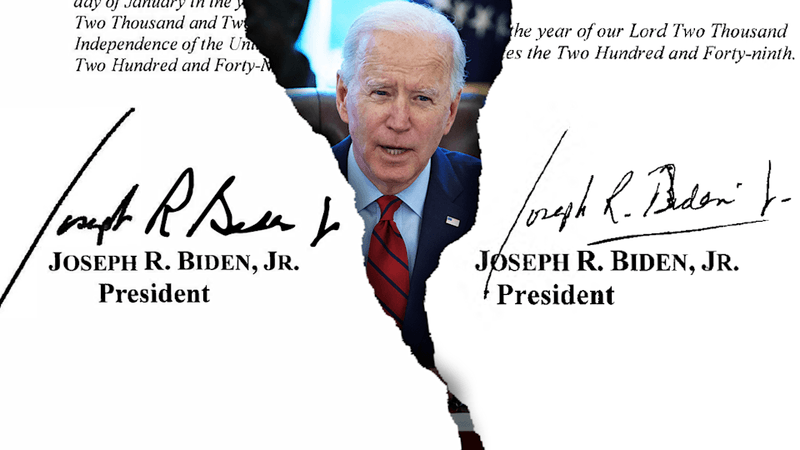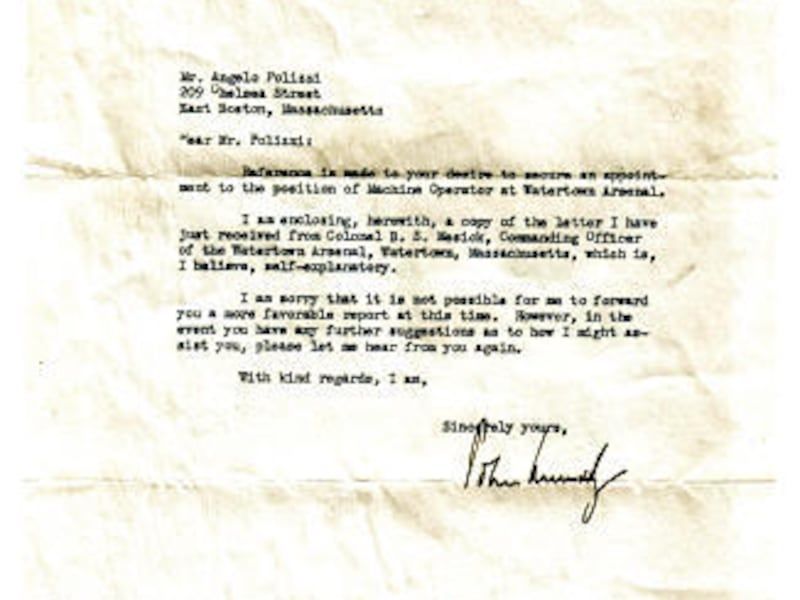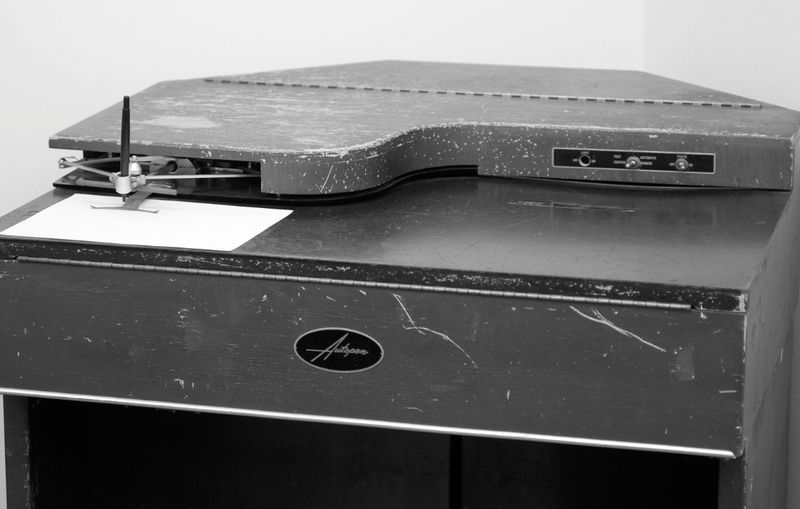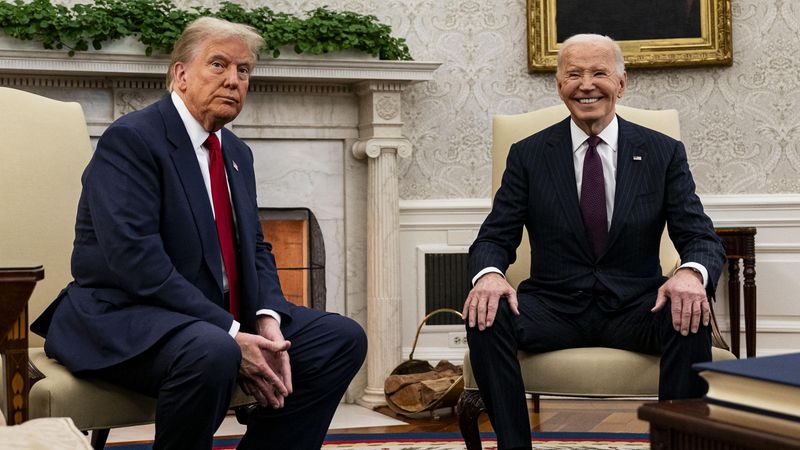Ever wonder how the President signs thousands of documents? Enter the autopen, a mechanical marvel that replicates signatures with remarkable precision. This ingenious device has been a White House staple for decades, allowing presidents to “sign” documents even when they’re halfway around the world. Understanding the autopen offers a fascinating glimpse into the practical realities of presidential duties.
1. The Mechanical Signature Wizard
Imagine a robotic hand that perfectly mimics your signature every time. That’s essentially what an autopen does! This specialized machine holds a regular pen and traces the exact pattern of your signature onto documents. Unlike digital signatures, autopen creates actual ink-on-paper marks that look remarkably authentic. The technology combines mechanical precision with customized programming to recreate the subtle curves and flourishes of handwriting. Each autopen is calibrated specifically for its user, capturing the unique pressure points and style that make a signature distinctively yours.
2. A History Dating Back Centuries
Long before computers, people dreamed of automating signatures. The earliest signature machines appeared in the 1800s when inventors created rudimentary devices using pantographs and mechanical linkages. Thomas Jefferson actually used an early version called a polygraph that made copies while he wrote! The modern autopen took shape during the 1930s and 1940s, evolving from simple templates to sophisticated machines. By the 1950s, government officials regularly employed autopens, though their use remained relatively secretive until recent decades.
3. Presidential Paperwork Overload
The sheer volume of presidential signatures required daily would shock most people. From legislation and proclamations to letters and photos, a president might need to sign hundreds of items in a single day! Without technological assistance, this signature burden would consume hours of precious presidential time. The White House adopted autopens as a practical solution to this overwhelming paperwork reality. When routine correspondence piles up or the president faces back-to-back meetings, the autopen steps in to maintain workflow without sacrificing the personal touch of a signature.
4. Signing Bills From Afar
Presidents travel constantly while legislation keeps moving. In 2011, President Obama made history by authorizing an autopen to sign a Patriot Act extension while he was in France—the first time a bill became law via mechanical signature! The Justice Department had actually cleared this practice back in 2005. Their legal opinion confirmed that a bill doesn’t require the president’s physical touch to become law, just their conscious approval. When time-sensitive legislation needs signing during presidential travel, the autopen provides a constitutional solution that keeps government functioning smoothly.
5. Fort Knox-Level Security Protocols
The presidential autopen isn’t just sitting on someone’s desk. This machine receives protection worthy of a national security asset! Stored in a secure, locked location, the White House autopen requires multiple staff members to access and operate. Every use gets meticulously logged with document details, time, and authorization information. The machine itself contains tamper-evident features and operates on secure networks isolated from potential hackers. After all, the power to create the president’s signature comes with extraordinary responsibility and corresponding security measures.
6. Teaching a Machine Your John Hancock
Programming an autopen begins with capturing the perfect signature. The president signs several samples which technicians digitize using high-resolution scanners. Specialized software converts these ink marks into precise vector coordinates that map every curve, dot, and stroke. Engineers then fine-tune the mechanical movements, adjusting for pen pressure and speed to create an authentic replication. Multiple test runs ensure the machine captures subtle nuances like how the pen lifts between letters or the slight hesitations that make each signature unique. The result: a mechanical signature nearly indistinguishable from the real thing.
7. Autopen vs. Human: Spotting the Difference
Even the best autopen signatures have telltale signs. Look for perfectly uniform ink lines—humans naturally vary pressure while writing, creating subtle thickness changes that machines struggle to replicate. Examine multiple signatures side-by-side. Autopen versions appear nearly identical, while genuine signatures show natural variations. The mechanical precision that makes autopens useful also makes them detectable! Forensic document examiners use microscopes to spot the tiny tremors and hesitations present in human signatures but absent in machine-generated ones. These microscopic clues reveal whether the president personally signed or delegated to the device.
8. Legal Standing in Government
Contrary to what some might assume, autopen signatures carry full legal weight. A 1984 court case firmly established that mechanically-produced signatures authorized by the signer are legally valid and binding. The key requirement? The person must explicitly authorize each use. Presidents typically provide specific approval for autopen signing sessions, making the resulting signatures legally identical to hand-signed versions. Some traditionalists argue against mechanical signatures on major legislation, but practical considerations usually win out. Modern governance simply couldn’t function if presidents personally signed every document requiring their authorization.
9. Beyond Legislation: Everyday Uses
Presidential autopens stay busy with more than just bills and proclamations. Condolence letters to families of fallen service members often receive autopen signatures when volume is high, though presidents try to personally sign these whenever possible. Congratulatory notes to Eagle Scouts, centenarians celebrating birthdays, and championship sports teams frequently come from the autopen. White House staff carefully categorize correspondence to determine which items merit handwritten signatures versus mechanical ones. Holiday greeting cards present an annual challenge—with tens of thousands going out, even the autopen needs help from printed signatures for the majority.
10. First Ladies and Cabinet Secretaries Join In
The presidential autopen isn’t the only signature machine in Washington. First Ladies maintain their own autopens for managing correspondence and ceremonial duties. Cabinet secretaries, especially those heading large departments like Defense or State, rely heavily on these devices. Imagine the Secretary of State attempting to personally sign thousands of diplomatic communications—impossible without mechanical assistance! Each office establishes protocols determining when mechanical signatures suffice and when personal signatures are required. Important diplomatic treaties still receive hand-signed attention, while routine acknowledgments get the mechanical treatment.
11. When the Personal Touch Matters
Even with autopen convenience, certain documents demand the president’s actual hand. Letters to heads of state, personal notes to close allies, and significant historical documents typically receive genuine signatures. Presidents develop systems for flagging which communications deserve personal attention. A letter to a terminally ill child or a note to a longtime mentor would never go to the autopen. The White House maintains careful balance between efficiency and authenticity. Staff members constantly evaluate which documents merit the president’s limited time and which can be handled mechanically without losing their essential meaning.
12. Transparency Practices and Public Knowledge
The White House hasn’t always been forthcoming about autopen use. For decades, the mechanical nature of many presidential signatures remained closely guarded information. Modern administrations have adopted greater transparency. Some documents now carry small notations indicating mechanical signing, and White House press offices occasionally acknowledge when the president has authorized autopen use for specific legislation. This openness reflects changing attitudes about presidential accessibility. Rather than pretending the president personally signs everything, acknowledging autopen use helps set realistic expectations about how the executive branch manages its enormous workflow.
13. Collectors and the Autopen Dilemma
Autograph collectors face a frustrating challenge with presidential signatures. The market value difference between genuine and autopen signatures can be thousands of dollars, yet telling them apart requires expertise. Serious collectors use reference books showing known autopen patterns for each president. Since each machine has fixed settings, it produces consistent signatures that experts can identify. Presidential libraries maintain records of which documents received authentic signatures versus mechanical ones. Truly valuable historical items like major legislation or inaugural addresses typically receive the president’s actual hand—making them the holy grail for collectors seeking authentic presidential penmanship.
14. Cutting-Edge Autopen Technology
Modern autopens bear little resemblance to their mechanical ancestors. Today’s versions incorporate precision servomotors, biometric security, and sophisticated software that can even vary pressure and speed. The latest models connect to secure servers requiring multi-factor authentication before operation. Some can simulate the tiny imperfections in human signatures, making detection increasingly difficult even for experts. White House technology teams regularly update these systems to incorporate security advancements. The presidential autopen now represents a fascinating intersection of mechanical engineering, digital security, and legal authorization protocols.
15. The Future of Presidential Signatures
As technology evolves, so too will the presidential autopen. Future versions may incorporate blockchain verification that creates an unalterable record of each signature’s authorization and creation. Biometric security continues advancing, potentially requiring presidential fingerprint or retinal scans before the autopen activates. Some experts even envision systems that could adjust signature characteristics based on document importance. Despite digital alternatives, the physical signature remains powerfully symbolic in American governance. The autopen’s continued relevance reflects our enduring attachment to seeing the president’s name personally affixed to the documents that shape our nation.

